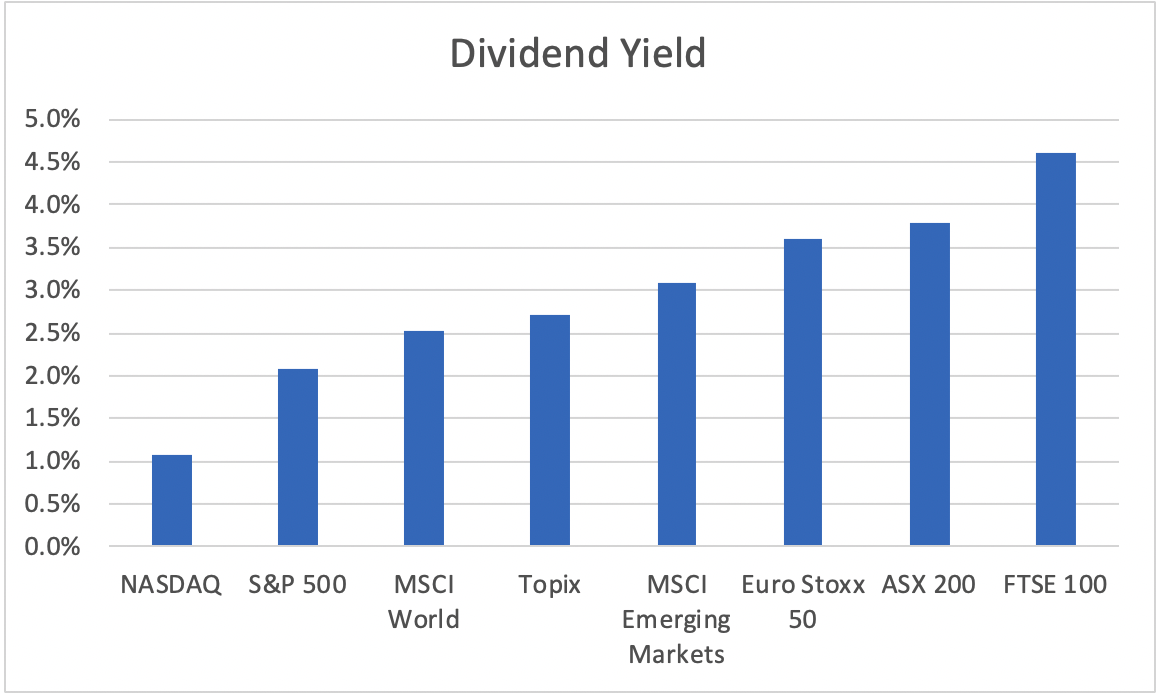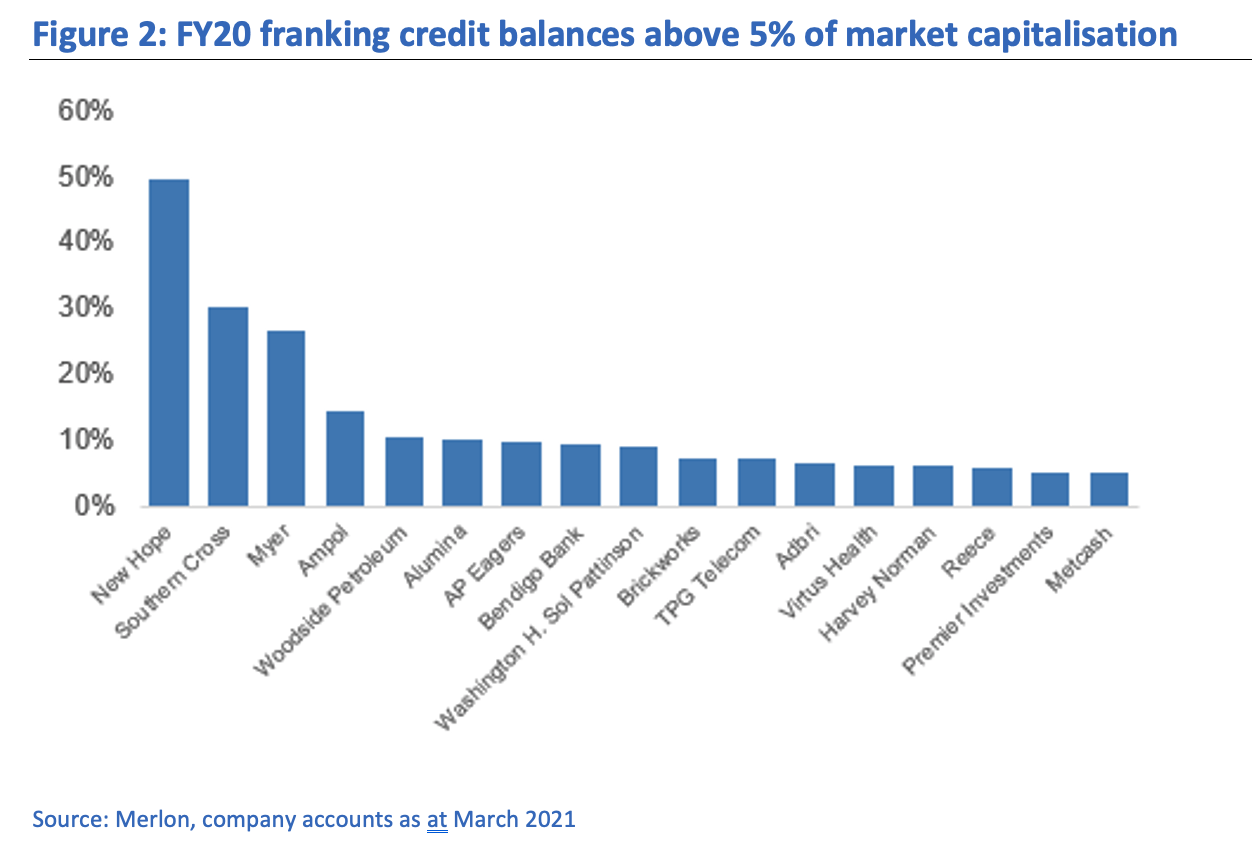Why franking credits underpin Aussie dividends
It’s no mistake that Australian investors receive some of the highest dividends in the world. Our generous franking credit tax breaks go a long way toward explaining why the payout ratios for ASX-listed companies are so high, and why so many investors favour high-dividend paying stocks.

Source: Bloomberg, 2020
Researching payout ratios can be a useful exercise before deciding between stocks for your portfolio. This metric can reveal how much of its earnings a company is returning directly to shareholders. Dividend payout is a good indicator of how a company chooses to deploy its money and how it approaches investor relations.
I canvassed the views of a couple of income-focused fundies below, and also spoke with Todd Hoare of Crestone Wealth Management. He explains that payout ratios are ultimately determined by underlying earnings and cashflows. "But before a Board gets to this stage, they need to determine what is the best way for the company’s funds to be allocated," says Hoare.
"Is the incremental return on funds reinvested back in the company a better outcome than returning it to shareholders? Or is pursuing M&A a better approach?"
He points out that the predictability - or volatility - of revenues plays a part, as does the allocation of capital by competitors. .
It can also depend on the type of industry. In Australia, some of the highest dividend-paying sectors are financials and materials, with an average dividend payout of 5.6% and 4.6% before the pandemic downturn. These figures will be quite a bit lower in recent times, given the widespread dividend cuts of FY2020.
In the following wire, two equity income specialists outline their views on payout ratios and explain the variance between companies and sectors.
To be perfectly frank…
Peter Gardner, Plato Investment Management
Dividend payout ratios vary from company to company for a myriad of reasons. Probably the most significant reason is the investment prospects available to a company. Some companies have more investment prospects and capital spending requirements than others. As such, some companies are better served by reinvesting profits into their business rather than paying them out to shareholders.
Tax paid in Australia is also a factor when it comes to dividends. This is because Australia’s taxation system sees companies receive franking credits when they pay Australian tax which can be distributed to shareholders when dividends are paid. These franking credits can significantly boost income and total return for Australian investors, particularly those on a lower tax rate. There is no benefit to Australian investors if those franking credits companies earn sit on their balance sheet, thus there is a big incentive for companies to pay dividends in order to distribute those franking credits to investors.
Lastly, company structures can also play a role in payout ratios. For example, Trusts must distribute all earnings in any given tax year.
The good and the bad of dividends
Neil Margolis, Merlon Capital
This question can be answered in two parts – what should influence directors setting dividend policy and what might influence them in practice.
The “sustainable dividend” factors discussed before are what should influence directors. These include:
- underlying free cash flows over accounting earnings
- an appropriate level of debt
- cyclical macro factors
- the growth trajectory of the industry, and
- the company’s position within this industry.
What might influence directors can be more simplistic. This can include a desire to maintain the prior year’s dividend to signal confidence to investors. There are many examples of unsustainable payout ratios, such as National Australia Bank (ASX: NAB) paying the same $1.98 dividend for each of the five years to 2018, despite free cash flow per share averaging below $1.20 over this period.
Telstra (ASX: TLS) is another example of a company that paid high dividends despite declining earnings from its monopoly fixed-line copper network propped up by one-off disconnection payments from the government and more than $16 billion in debt.
To be fair, another big influence is distributing franking credits to shareholders rather than hoarding them and providing an interest-free loan to the tax office. Franking credits are the main reason dividends are more common here and buy-backs more common in the US.
Philosophically and in the way we value businesses, we view franking no different to cash, which is consistent with their value to our investors. We don’t have a problem with a company paying slightly above its sustainable payout ratio to distribute franking credits. The banks do this via their “dividend reinvestment programmes” which is simply issuing shares to part-fund the dividend, but this can lead to dilution over time.
Surplus franking credits relative to market capitalisation for the below companies gives an indication of the value left on the table at present.

Conclusion
Beyond the desire to move franking credits off company balance sheets, Australian boards decide payout ratios based on a few different reasons. As explained above, high payout ratios are often pursued for the right reasons. But sometimes these are more populist than practical. Understanding these dynamics paves the way for income investors to understand what drives company dividend decision-making and can help in building out a portfolio's income component.
Stay up to date with this series
Make sure you "FOLLOW" my profile to be notified of the upcoming entries in this series. In part one, the contributors discussed how they discern some of the best dividend opportunities. And in part three, our trio each discuss some Australian companies they believe offer the best yield prospects.
3 topics
2 stocks mentioned
3 contributors mentioned

